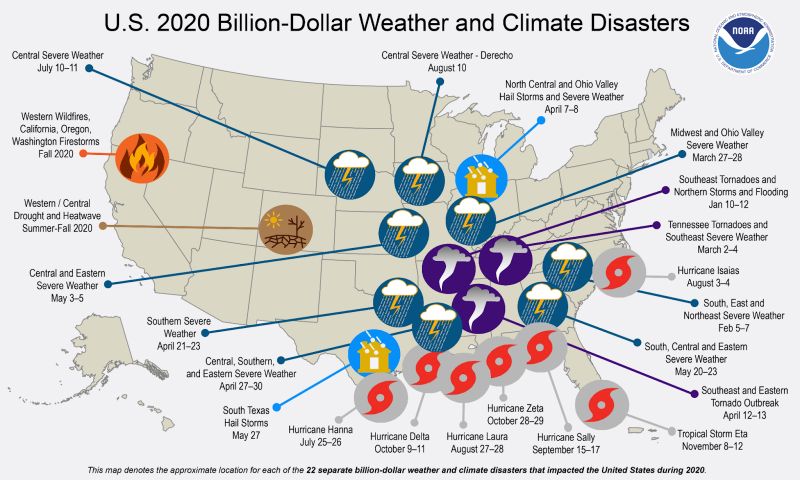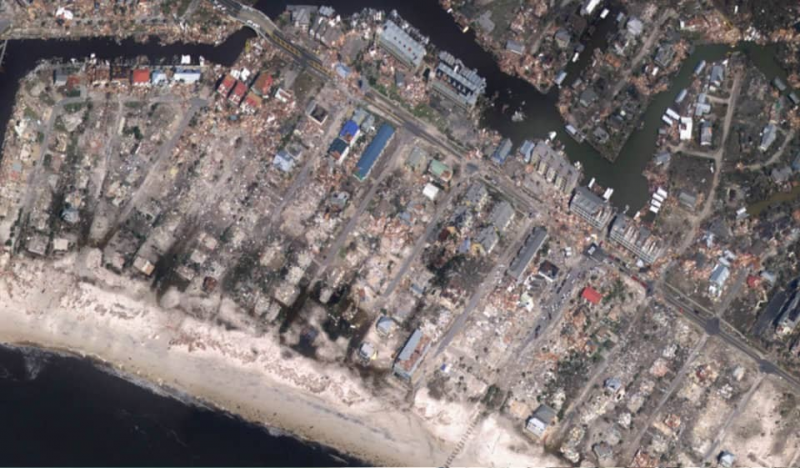For the Atlantic ocean basin, June 1 marks the beginning of hurricane season, which runs through Nov. 30. NOAA’s National Ocean Service has 100 facilities, 14 marine sanctuaries, two national monuments, and more than 1,400 employees to manage and protect from hurricanes and other significant weather events. The National Ocean Service also supports five mission essential functions in support of presidential disaster declarations. This means that when hurricanes or environmental emergencies occur, the National Ocean Service must provide assistance. So how do the experts at NOAA prepare for and respond to hurricanes? And what can your business, organization, or community learn from experts in the field?
Here are some tips from OR&R's Disaster Preparedness Program and Weather-Ready Nation. The Disaster Preparedness Program is a national program based out of NOAA’s Gulf of Mexico Disaster Response Center in Mobile, Alabama. The program leads the National Ocean Service Incident Management Team, ensures continuity of operations during natural disasters such as hurricanes, and advises other federal agencies and partners on environmental response, restoration, and recovery. Weather-Ready Nation is a community resilience program and safety outreach campaign within NOAA’s National Weather Service.
Look To Improve from Previous Years
The 2020 hurricane season had 30 named storms, the most in a single season in 170 years of record keeping. Twelve of these storms made landfall—another single season record. All of these storms require agency preparation, action, and response. Shortly after any significant event, the Disaster Preparedness Program hosts a “hotwash,” or performance review, of agency actions and discusses what worked and what did not. At the conclusion of each hurricane season, the program develops an after-action report and improvement plan so the National Ocean Service performs better the following hurricane season.
Were you in the unfortunate situation of having to evacuate last year? Was your business or community impacted by a severe storm or hurricane? If so, what lessons were learned and what improvements can be made?

Before the Storm, Consider Your Needs After The Storm
The program is responsible for ensuring continuity of operations, or COOP, for the National Ocean Service. Program staff coordinate with other National Ocean Service offices to better prepare organizations and staff for emergency disasters. Offices are required to develop a COOP plan, which describe actions such as emergency notification systems and alternative worksites.
“It’s the little things, like ensuring you have current contact information for staff, that employees understand how significant evacuating really is, and that they know how and when to check in with their supervisor, that make a big difference," said Alyson Finn, emergency planning specialist for the program.
Imagine if your organization has to evacuate for an extended period, or if your community has no power for several weeks, consider what tasks will still need to be completed. For example, which employees can work remotely? How do staff or residents manage child or elder care responsibilities? Remember that even after the storm subsides, life will keep going and demands and deadlines will remain—how will those be met?

Maintain Situational Awareness
The program leads the National Ocean Service Incident Management Team and briefs NOAA leadership with consistent situational updates so that senior level managers can make appropriate decisions with regards to NOAA’s mission, infrastructure, and personnel.
“Keeping consistent communication and establishing an operational tempo is key,” said Charlie Henry, director of the Disaster Response Center.
Consider how information flows through your organization. When things get hectic, does information flow more quickly, or are there communication failures?
Make Your Organization Weather-Ready
NOAA wants everyone, from communities across the country, businesses, and the public at large to be ready, responsive, and resilient to extreme weather, water, and climate events. NOAA recognizes that building a Weather-Ready Nation requires innovative collaborations with emergency managers, businesses, and all levels of government. Consider making your organization or business a Weather-Ready Nation Ambassador to promote weather awareness and emergency preparedness.
